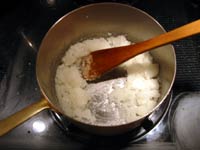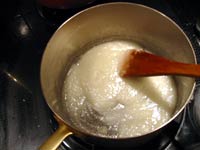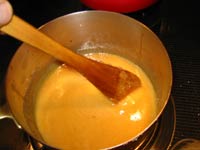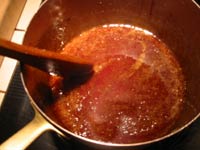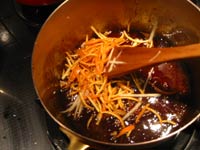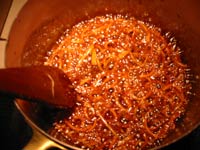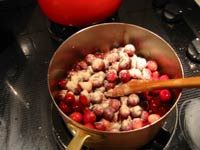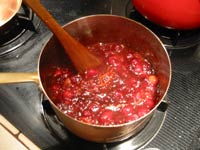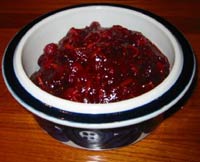Willow Pond Thanksgiving Recipes |
||||||||||
|
Although some think that a festive Thanksgiving dinner would not be complete without cranberry relish, I never really cared very much for the stuff. The commercial variety tends to be both sweet and tasteless, with a consistency that can turn grown men squeamish. This
recipe corrects all. I've almost become a fan of this shrubby
vine's fruit. BTW, the name may
come from a corruption of "craneberry" as cranes, living in New
England, ate the berries. They are also known as bearberries
for a parallel reason. The ingredients:
Preparation (< 40 min): 1. Carefully peel 1 orange (to get the outer orange part only) and cut the zest into a very fine julienne, as thin as possible; set aside. Squeeze both oranges for juice; set aside. 2. Combine sugar and lemon juice in a sauté pan. Heat up slowly and continue cooking until the sugar begins to caramelize*. If necessary, wash down the sides of the pan by brushing with a little water or orange juice to keep the sugar from burning. Be careful to not add more liquid than really needed; the sugar itself will melt at ca 340° F. [*Caramelization is the progressive dehydration of the sucrose molecule (described by Maillard in 1912). There are approximately three stages resulting in larger, and less water soluble, compounds. The initial products tend to have a bitter flavor while the later ones have buttery, or toffee, characteristics. Some flavorful pyrolytic compounds formed include maltol, isomaltol and hydroxymethylfurfural; read more about caramelization from food-info. Tip to the cook: caramelizing sugar has a melting point just below that of the outer corona of the sun - resist licking the spoon to check the progress of flavor development.]
3. When the sugar is nicely caramel colored, add the julienned ginger and orange zest. Cook for about 1 minute, then add the cranberries, white pepper, and about half of the orange juice. Be careful though, popping cranberries can hurl ultrahot caramel in all directions.
4. Continue to cook on medium-high heat, stirring frequently, for about 5 to 7 minutes or until the cranberries are slightly broken but not mushy. Add the remaining orange juice as needed if the sauce is too thick. If it seems too liquid, don't panic, the sauce will become thicker as it cools. Remove from the heat and let cool. When the sauce is still warm, transfer to a serving dish or bowl. It's easier to shape and have it look nice before it cools completely. Cover and refrigerate if not used the same day, but serve at room temperature. Makes about 3 cups. References: |
||||||||||
© All contents
copyright by WillPondCoTM |
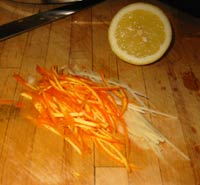
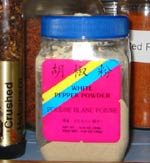 (or
powdered; some asian markets have ground white pepper that retains
its pungency and is of a very fine consistency, perfect for this
dish).
(or
powdered; some asian markets have ground white pepper that retains
its pungency and is of a very fine consistency, perfect for this
dish).